Growing Verbena - Learn All About Vervain Benefits and Plant Care
Verbena is an incredibly characteristic plant which fits in any garden. Because of its decorative value, beautiful flowers and interesting-looking leaves, it's a popular plant among gardeners. Verbena can be grown in flower beds, but not only. It can also be planted in pots, and become a perfect decorative addition to balconies and patios. How to take care of this magnificent flower? We have some useful tips for you.

Verbena – origin and characteristics
Verbena, or vervain, is known in its garden form as Verbena hybrida. This variety is a result of work carried over the years. Thermophilic varieties from South America were hybridized with plants growing in colder regions.
As estimated, there are about 200 species of this plant in the world. Their appearance depends on the particular type. There are verbena plants with either raised, or creeping habits. Their height ranges from 20-25 to even 70 cm (8-27 in). The varieties also differ by their leaves – some are oval, others might have an elongated shape.
Regardless of the variety, verbena has one characteristic feature – it forms large flower clusters during blooming season, with a delightful fragrance. The flowers have various colors, ranging from purple to red, and even white.
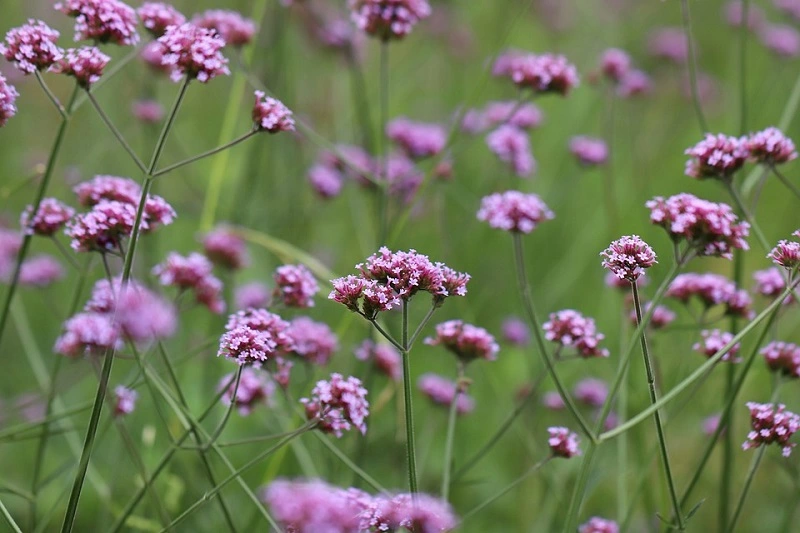
The most popular verbena varieties
From nearly 200 different verbena varieties, some are the most popular among gardeners. They include:
- common vervain (Verbena officinalis) – growing up to 70 cm tall, each stem of the plant is upright; the plant’s leaves are relatively wide, and have different shapes depending on the height of their growth; the flowers are small, with a pale pink color;
- rose verbena (Verbena canadensis) – grows mainly in North America and reaches up to 40 cm tall; this variety has characteristic leaves – they are very green and jagged; the flowers are tinged with amaranthine color;
- purpletop vervain (Verbena bonariensis) – in its natural habitat, it can grow up to 1.5 meters (5 ft) tall and 50 cm (20 in) wide; during the blooming season, the stiff stems develop many lavender-colored flowers on their tips;
- slender vervain (Verbena rigida) – it can grow up to 40 cm tall; when in bloom, it’s full of tiny blue-lilac flowers.
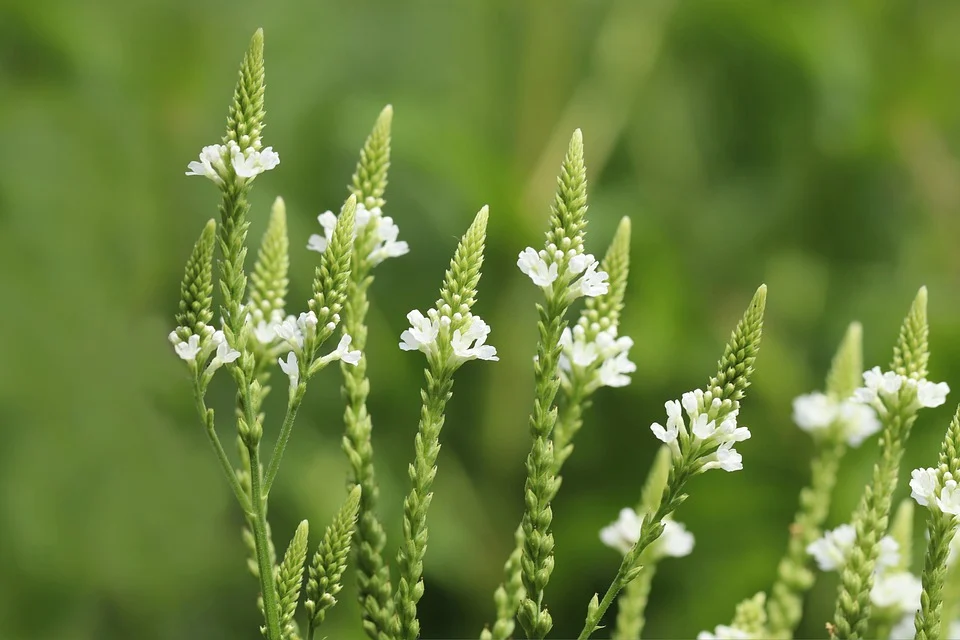
The unusual benefits of verbena
Vervain is not only a plant that looks great in gardens and patios. You can also use it in the kitchen. It might be helpful for common cold, as a tea brewed from its flowers.
Verbena also has a soothing effect on various types of skin irritation, caused e.g., by insect bites, or acne. Furthermore, it can also affect the nervous system, and reduce stress, protect from fatigue, as well as speed up the process of falling asleep.
Verbena plant care and cultivation
If you decided to grow vervain in your yard or containers, make sure to follow a few certain rules. Thanks to them, you will enjoy its magnificent appearance during the blooming season. First, verbena prefers warm and sunny locations. If you want to plant it in a flower bed, avoid places exposed to wind, as vervain dislikes drafts.
Verbena plant doesn’t have any particular preferences about the soil it grows in. But for the most optimal conditions, make sure to use permeable soil enriched with nutrients.
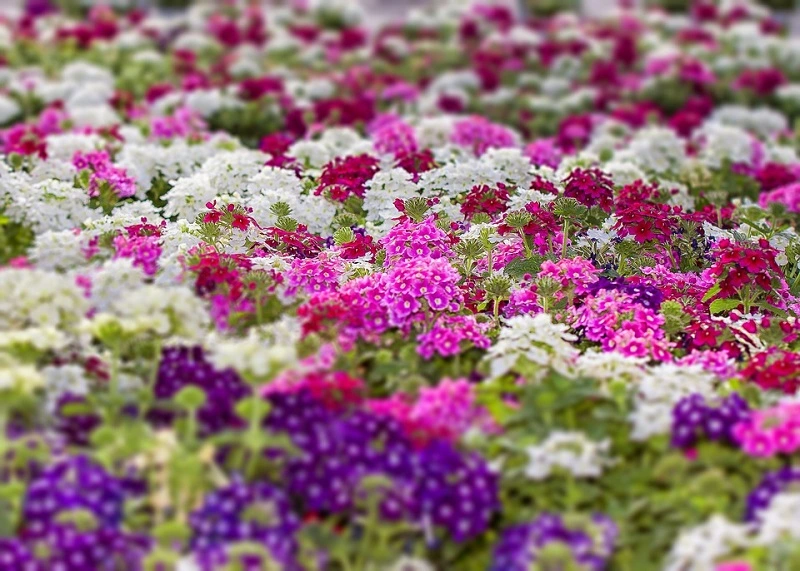
Does verbena need regular watering?
Verbena doesn’t tolerate neither droughts nor excessive moisture. If you overdo watering, you can easily cause root rot. Make sure to water the plant in moderation. Water in greater amounts can be provided only during hot months, when there’s a drought.
How to fertilize verbena
Verbena requires proper fertilizing. You should use a special fertilizer designed for flowering plants. Repeat feeding once a month. Remember that too much of the fertilizer is not beneficial to the plant. It might lead to a situation in which it develops more leaves than flowers – so make sure not to exceed the recommended dosage.
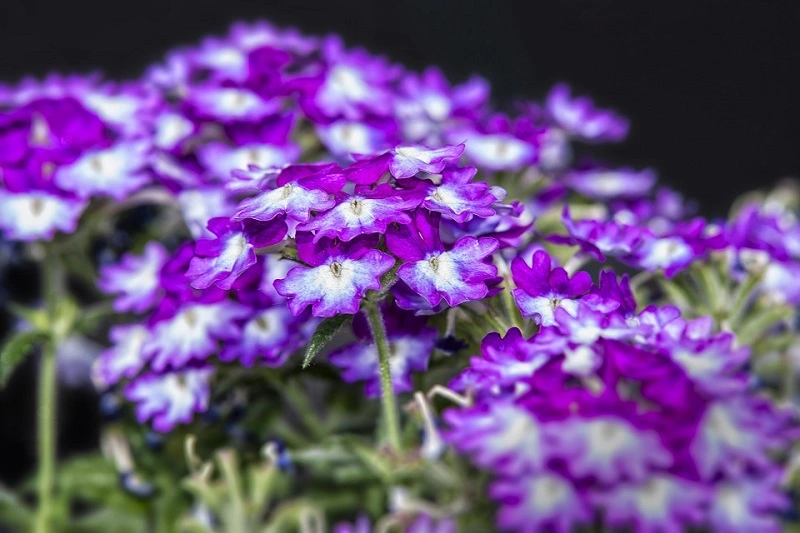
Verbena propagation – how to multiply vervain plants?
Verbena can be propagated mainly by seeds collected from the plant. They form in late fall, so wait with trimming the plant as long as you can. The best time to do it is after the first frost, even at the beginning of December. The seeds can be planted in containers during any season.
When planting the seeds, use permeable and rich soil, which helps with germination. If sowing them directly in the ground, we recommend securing them with a black cover.
If you want to plant verbena seedlings or sow the seeds in the garden, you should wait until the last spring frost passes. This way, there’s no risk of harming the young plants.
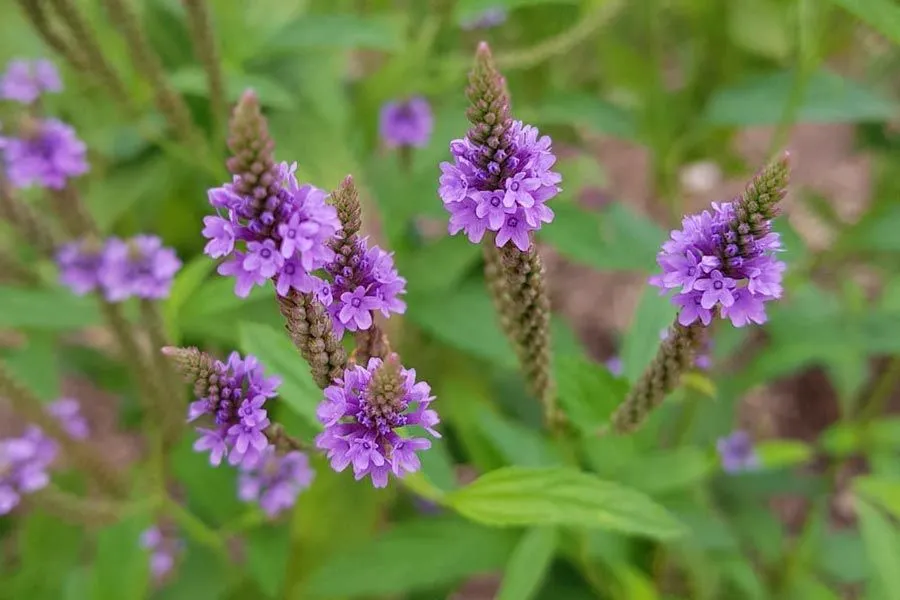
Verbena – threatening pests and diseases
Verbena gets attacked the most by spider mites and aphids. These pests can be quickly gotten rid of by using adequate products.
If the plant is located in a dark spot, it might be vulnerable to powdery mildew. The infected leaves have to be removed, and you should use an adequate antifungal product.

📍 What does verbena look like?
Verbena is an impressive plant. Its stems are covered with small bright-colored hair. The leaves are corrugated and have elongated shape. The flowers are small and grow in larger clusters.
📍 Where to buy a verbena plant?
Verbena is a popular plant among gardeners. It can be purchased in most garden stores. It's also sometimes available in supermarkets with a "garden" section.
📍 How to deadhead verbena?
The flowers that finished blooming should be removed. Thanks to this, the verbena plant has enough room for new ones. You don't need any gardening tools for that. Just deadhead the plant using your hands.
📍 What does verbena smell like?
The fragrance of verbena is one of the reasons for its popularity. The flowers smell fresh and delicately. When rubbing the leaves, you can smell a lemony fragrance. Therefore, not only the flowers, but also leaves are noteworthy to gardeners.
Featured articles




